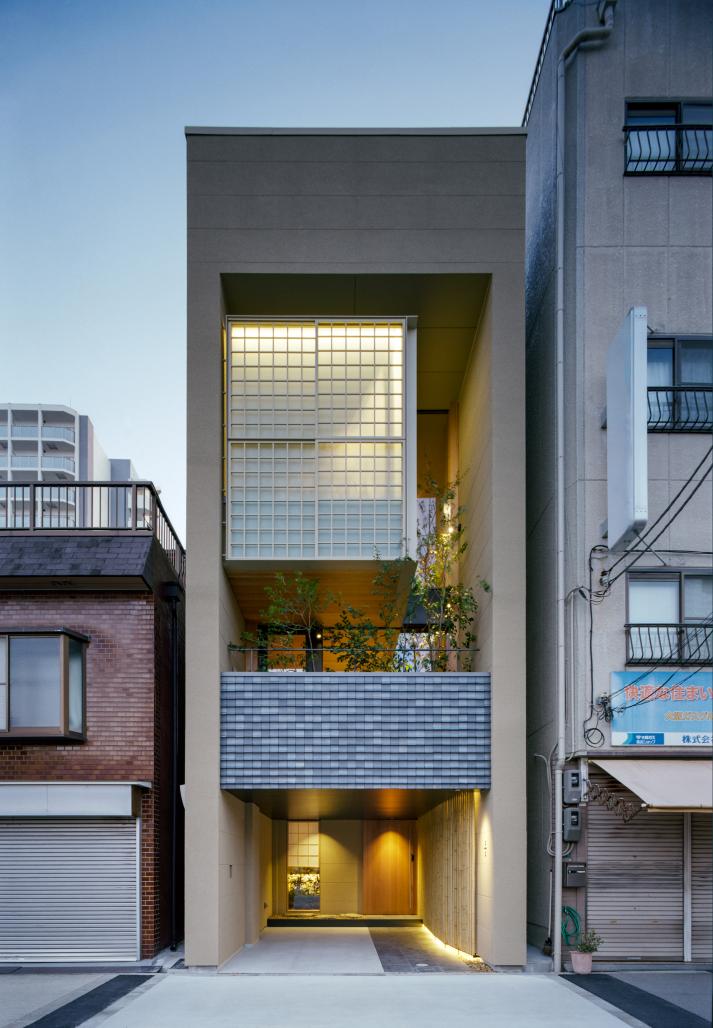This is a private lodging with a frontage of 5.2 m along a main street, with an effective internal width of 3.9 m
The client requested a space that evoked the atmosphere of traditional Japanese architecture.
Based on the client's request, we envisioned a floating tea room-like lattice structure with shoji screens (traditional Japanese lattice-and-paper screens,) which is visible from the outside, and a small garden path leading to the shoji box.
On the inside, spaces are stacked in a split-floor configuration, with a central stairwell providing unobstructed views from each space.
We proposed creating several small gardens and places where you can view the plantings from inside the building.
Entering the first floor from the approach through a bamboo and stone garden, one arrives at the entrance hall with a garden.
There is a subtly floating private room facing the entrance hall, with a view of the garden from a slightly elevated vantage point across an engawa (traditional Japanese open-air veranda)-like landing.
Stairs are arranged around the small garden, leading up to the second floor with a view of the garden.
Other facilities on the first floor include a bathroom and a tsuboniwa (small, enclosed garden.)
The second floor has a tatami-floored living room with a garden, providing a view of the garden from a low vantage point.
On the upper level of the second floor is a dining kitchen, from which one can view the living room garden through the open stairwell.
In addition, the “floating shoji-screen box” on the third floor is also visible from the dining kitchen.
The first level of the third floor is a “floating shoji box.”
Inside, there is a bathroom and a garden, allowing one to enjoy the atmosphere of an open-air bath.
There is a private room on the second level of the third floor.
The curved sloped ceiling is visually connected to the rooftop balcony, and the large movable shoji partitions connect the entire floor with a sense of ambiguity, giving the space a varying sense of spaciousness depending on how it is used.
The exterior at night is designed so that the floating shoji-screen box is illuminated to look like a lantern.
2024
2025











